
Historical Connections • Photo Album • Message Board • Todd's Pages • Jeff & Beth's Pages
Logie Parish
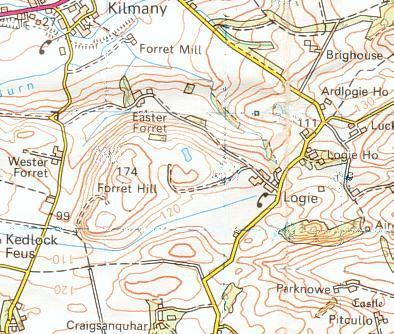 Logie parish contains the small villages of Logie and Lucklawhill Feus,
and is bounded on the north by Forgan, east by Leuchars, south by Dairsie,
and west by Kilmany. The extreme length of the parish is four and
five-eighths miles from north-east to south-west, its breadth varying from
two and a quarter miles to three quarters of a mile, with an area of 3599
acres. The parish lies between Motray burn, which forms the northern
boundary, and Moonzie burn, which marks the southern limit. The surface
declines on the north and south towards these streams, reaching a height
of 85 feet and 180 feet above sea-level; but the ground rises towards the
north-east--Forret Hill near the centre of the parish being 571 feet, and
Lucklaw Hill being 626 feet, while Crumblie Hill in the north-eastern part,
near the valley of Motray, is only 335 feet. By far the largest portion of
the parish is under cultivation. The only occupation is agriculture.
Formerly there were hand- looms giving work to a fair portion of the
inhabitants, but these have quite disappeared. The following figures give
the population:
Logie parish contains the small villages of Logie and Lucklawhill Feus,
and is bounded on the north by Forgan, east by Leuchars, south by Dairsie,
and west by Kilmany. The extreme length of the parish is four and
five-eighths miles from north-east to south-west, its breadth varying from
two and a quarter miles to three quarters of a mile, with an area of 3599
acres. The parish lies between Motray burn, which forms the northern
boundary, and Moonzie burn, which marks the southern limit. The surface
declines on the north and south towards these streams, reaching a height
of 85 feet and 180 feet above sea-level; but the ground rises towards the
north-east--Forret Hill near the centre of the parish being 571 feet, and
Lucklaw Hill being 626 feet, while Crumblie Hill in the north-eastern part,
near the valley of Motray, is only 335 feet. By far the largest portion of
the parish is under cultivation. The only occupation is agriculture.
Formerly there were hand- looms giving work to a fair portion of the
inhabitants, but these have quite disappeared. The following figures give
the population:
1801 - 339, 1811 - 369, 1821 - 440, 1831 - 430, 1861 - 410, 1871 - 402, 1881 - 390, 1891 - 360
The name of Logie is supposed to have been derived from a Gaelic term, signifying a hollow among the hills, and this sufficiently describes the topographical situation of part of the parish. There are many places throughout Scotland bearing the same name -- in Perthshire, Forfarshire, and Aberdeenshire especially-- and it became necessary to conjoin the name of the proprietor, or of an adjoining burgh or river, so as to make a distinction. Thus in Perthshire we have Logie-Almond and Logie-bride; in Forfarshire there are Logie-Dundee, Logie-Wishart, and Logie-Montrose; and in Aberdeenshire we find Logie-Mar, Logie-Elphinstone, Logie-Crimond and Logie- Buchan. The principal estate in this Fifeshire parish was known as Logie-Murdoch, the origin of which name may be thus explained. Amongst the Fife barons whose names appear in the Ragman Roll as swearing fealty to Edward I. in 1296, the name of Wauter de Logy is inserted. No other trace of this person has been found, but it is evident from the entry that the estate was not then Known as Logie-Murdoch. In the time of David II. [1331-1370], a charter of the lands of Logie in Fife was given to Murtach de Glocester, which is noted in Robertson's " Index of missing Charters," and the place is there designated Logie-murtach. The probability is that the estate, like others further north, was named by the cognomen of the new proprietor, and this name has survived until the present time.
Who was Murdoch of Glocester? The form of the name suggests that he was of southern extraction, and may have been a descendant of some of the English knights who aided Edward I. in the subjugation of Scotland, as many of the estates in the immediate vicinity of Logie were conferred upon English soldiers for similar services. The prenomen of Murtach, however is undeniably Celtic, and this fact tells strongly against the theory. The territorial title of Glocester may, after all, be only a Latinized form of Glaister, which is still the name of one estate in Argyllshire and of another in Forfarshire. And it is very suggestive to notice that, previous to 1489, John, Lord Lindsay of the Byres, had granted the lands of Aberkidor in Banffshire to a certain Murdoch of Glaister, in whose name we have an exact counterpart of that of the propietor of Logie a hundred years before that date. Whoever Murdoch de Glocester was, his family did not long retain the estate of Logie, as it was granted by Robert III. to Sir John Wemyss of Rires and Kincaldrum, who was patron of Andrew Wyntoun, the author of the "Cronykill of Scotland."
For many years the baronial mansion of the estate of Logie was Cruivie Castle, for though Cruivie is now a separate estate, it formed at one time part of the barony of Logie-Murdoch. The precise date of the erection of this ruin is not known, but, from its style and plan, it appears to have been built towards the close of the fourteenth or beginning of the succeeding century. Though written evidence has been found to confirm the supposition, it is very probable that it was built by Sir John Wemyss to replace his castle of Rires, which was besieged and destroyed by the Duke of Rothesay in 1402. It must be admitted, however, that the "fortlace of Cruvie" is not mentioned in any of the charters of the estate of Logie previous to 1539, at which time the lands of Cruvie had been alienated by the Wemyss family. Before that year several documents were dated from "the house of Logie-mirtho," a baronial residence of which no trace has been found. In 1466 Sir Thomas Wemyss of Rires obtained the lands of "Cruvie and Logie-murtoith" from James III., and in 1476 he resigned them in favour of his second son John Wemyss. By this resignation Sir Thomas had sought to pass over the fatherless daughter of his eldest son, but in the following year the King caused him to cancel the unjust charter he had executed, and to leave entire the estate that belonged by right to his grand-daughter, Elizabeth Wemyss. In 1548, Andrew Wemyss was served heir of his father, Jame Wemyss of Myrecairney, who fell at the battle of Pinkiecleugh, and the estate was then described as " the lands of Wester-Cruvy, the lands of Logymirtho, and the lands of Brighouse."
|
Photos from Logie Parish
Click on a photo to view a larger version. |
||

|
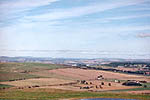
|

|

|
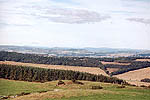
|
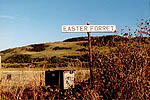
|

|

|
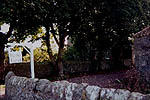
|
Last Modified: 9-January-2001
Send Comments or Questions to: Webmaster@Forret.org